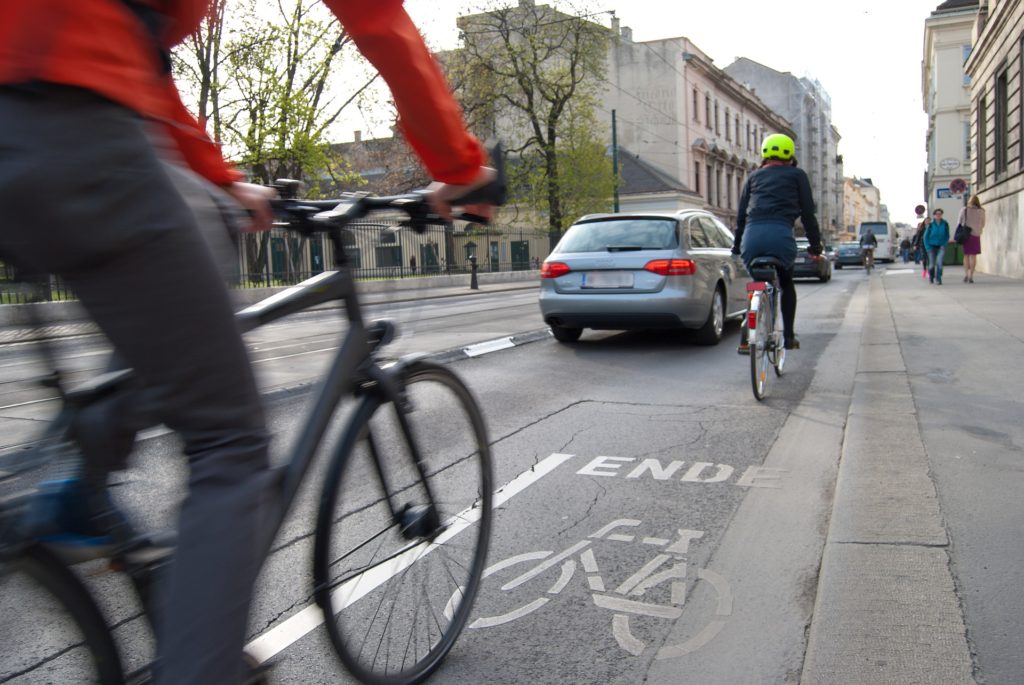If someone experiences a personal injury due to the negligence or intentional actions of another party, the legal system allows...
Protesters Organize to Show Lack of Protection Painted Bike Lanes Give Cyclists
After Massachusetts state officials added painted bike lanes to two busy parkways in Boston, cyclists had something to say. More than 100 people stood in bike lanes on roads near the populous intersection of Fenway and Brookline Avenue during the typical morning commute to highlight the dangerous conditions cyclists face every day.
Together, protesters formed a human “bike lane”. The non-profit who organized the protest, the Boston Cyclists Union, stated, “We can do better than just paint.” And they are right.

Cyclist Accident Statistics
Bike accidents in Boston are unfortunately common. In fact, in 2007, the mayor issued the Boston Bikes Regulation in response to the growing number of accidents to help protect cyclists on Boston streets. But that doesn’t seem to be enough. Cyclists are 76% more likely to be injured in auto-related accidents than any other type of accident, bike accidents can be severely damaging because their frames are much smaller and light-weight than all other vehicles.
On a national scale, the U.S. reports more fatal and injury-causing traffic accidents than most other countries. According to a recent bicycle accident statistics report, pedestrian and bicyclist fatalities increased by nearly 32% in the last ten years. The report also notes deaths among bicyclists age 20 and older have more than tripled since 1975.
Looking at the data, most recent protest, and current state of affairs for bicyclists, it begs a bigger question: what actually can be done to improve the safety of cyclists both in Boston and across the nation?
Protected Bike Lanes
The most obvious answer to improving bicyclists safety is simple: create separated and protected bike lanes. In one of the most comprehensive studies of bicycle and road safety to date, which included the review of 12 large metropolises, the University of Colorado Denver and the University of New Mexico found protected bicycle lanes make roads safer for everyone, not just cyclists.
The study, published in the Journal of Transportation & Health, found protected bike lanes help slow cars and reduce fatalities. The study also found that bicycling infrastructure is significantly associated with fewer fatalities and ultimately better road-safety outcomes. The most effective type of protected bicycle lanes were those fortified with stanchion, planters, and the like.
Bicycle Signals
Bicycle signals have been used around the world, first appearing in the United States in the city of Davis. Subsequently, other cities have used bicycle signals, but they have yet to be fully rolled out in the majority of major cities.
Similar to protected bike lanes, there is data to support the claim that bicycle signals improve safety. By separating conflicting movements, bicycles and pedestrians have their own dedicated phase. This therefore decreases the chance of conflicts with motor vehicles.
While bicycle signals can be activated by a variety of different devices, it is recommended by the LA’s Bike Plan’s Technical Design Handbook to be activated by bicycle sensitive loop detectors, video detectors, or push buttons.
Education of Drivers
In addition the two infrastructure-related recommendations to improve cyclist safety, driver education can also help. Teaching and reminding drivers to share the road could help contribute to decreasing the fatality rate of cyclists; many states have taken it upon themselves to do so, often promoting “Share the Road” initiatives.
Drivers should yield to bicyclists as they would to motorists, avoid turning in front of a bicyclist, and always scan their surroundings to avoid a bicycle accident. Giving cyclists ample room, avoiding distracted driving, and obeying speed limits are also best practices to improve the safety of everyone on the road, cyclists included.
Cyclist Safety is Everyone’s Responsibility
Ensuring roads are safe for cyclists is not just for lawmakers; it includes cyclists themselves, drivers, pedestrians, and urban planners. Studies show protected bike lanes and bicycle signals have decreased fatality rates not just for cyclists, but for everyone on the road, and do much more than a painted line.
